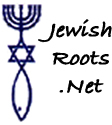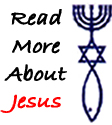






![]()
Almost immediately upon assuming the Chancellorship of Germany, Hitler began promulgating legal actions against Germany's Jews. In 1933, he proclaimed a one-day boycott against Jewish shops, a law was passed against kosher butchering and Jewish children began experiencing restrictions in public schools. By 1935, the Nuremberg Laws deprived Jews of German citizenship. By 1936, Jews were prohibited from participation in parliamentary elections and signs reading "Jews Not Welcome" appeared in many German cities. (Incidentally, these signs were taken down in the late summer in preparation for the 1936 Olympic Games in Berlin).
In the first half of 1938, numerous laws were passed restricting Jewish economic activity and occupational opportunities. In July, 1938, a law was passed (effective January 1, 1939) requiring all Jews to carry identification cards. On October 28, 17,000 Jews of Polish citizenship, many of whom had been living in Germany for decades, were arrested and relocated across the Polish border. The Polish government refused to admit them so they were interned in "relocation camps" on the Polish frontier.
Among the deportees was Zindel Grynszpan, who had been born in western Poland and had moved to Hanover, where he established a small store, in 1911. On the night of October 27, Zindel Grynszpan and his family were forced out of their home by German police. His store and the family's possessions were confiscated and they were forced to move over the Polish border. Zindel Grynszpan's seventeen-year-old son, Herschel, was living with an uncle in Paris. When he received news of his family's expulsion, he went to the German embassy in Paris on November 7, intending to assassinate the German Ambassador to France. Upon discovering that the Ambassador was not in the embassy, he settled for a lesser official, Third Secretary Ernst vom Rath. Rath, was critically wounded and died two days later, on November 9.
The assassination provided Goebbels, Hitler's Chief of Propaganda, with the excuse he needed to launch a pogrom against German Jews. Grynszpan's attack was interpreted by Goebbels as a conspiratorial attack by "International Jewry" against the Reich and, symbolically, against the Fuehrer himself. This pogrom has come to be called Kristallnacht, "the Night of Broken Glass."
On the nights of November 9 and 10 1938, gangs of Nazi youth roamed through Jewish neighborhoods breaking windows of Jewish businesses and homes, burning synagogues and looting.(1)
Though portrayed by Germany’s Nazi government as a “spontaneous” riot against Jews, Kristallnacht was anything but that. In his landmark book The Rise and Fall of the Third Reich, journalist William Shirer told of communications between Nazi officials that included explicit orders to those taking part in attacks: “Businesses and private apartments of Jews may be destroyed, but not looted.” “The demonstrations that are going to take place should not be hindered by the police.” “As many Jews, especially rich ones, are to be arrested… the appropriate concentration camps should be contacted immediately in order to confine them.” Clearly, the historic record shows that Kristallnacht was a coordinated attempt by the Nazi regime to kill, intimidate, and strike terror into the hearts of German Jews.(2)
Kristallnacht and the events leading up to it are well-documented. But there is a new book, 48 Hours of Kristallnacht: Night of Destruction/Dawn of the Holocaust by author Mitchell Bard, that offers another perspective on this event that signaled in many ways the official beginning of Hitler’s “final solution” aimed at destroying the Jewish people. Using eyewitness accounts, Bard paints a vivid and terrifying picture of Jewish life in Germany during those two days.(2)
 Kristallnacht means "the night of broken glass."
Kristallnacht means "the night of broken glass."
In one night, 1574 Jewish synagogues were burned to the ground or destroyed. 1,300-1,500 Jews were killed; 30,000 Jews were arrested and sent to concentration camps; 7,000 Jewish businesses were destroyed; and thousands of Jewish homes were ransacked by Nazi storm troopers and non-Jewish civilians.(3)
The American public was fully informed of the events in Germany. Detailed reports about Kristallnacht appeared repeatedly on the front pages of the nation's newspapers during the days following the pogrom, however, Kristallnacht did not fundamentally alter the international community's response to Hitler. There were no economic sanctions against Nazi Germany, no severing of diplomatic relations. The world's muted reaction to the Kristallnacht pogrom gave tacit approval for Hitler to commence his "Final Solution," his attempt to annihilate the Jews from the earth.(3)
Coincidently, this event took place on the birthday of Martin Luther who wrote about burning synagogues. For more on his Anti-semetic writings please read Martin Luther Writings.
The last official record of Grynszpan places him in the Sachsenhausen concentration camp north of Berlin in 1942.
November 2013 was the 75th anniversary of Kristallnacht.
Articles of Interest Include:
1). http://frank.mtsu.edu/~austin/knacht.html (100%) (Snyder, Louis L. Encyclopedia of the Third Reich. New York: Paragon House, 1989:201).
2). International Fellowship of Christians and Jews email newsletter 11-8-2008.
3). Jewish Voice International Ministries - Jewish Voice Today Nov/Dec 2008.